
Corinna Kufner
The Ultrafast Dynamics of UV-Induced Charge Transfer States in DNA Oligonucleotides Containing Guanosine
Harvard University // Cambridge, USA
Q&A Session I // Wednesday, October 28 // 6.15 pm – 7 pm (CET)

Charge transfer plays a major role in the photochemistry of DNA.[1] Among the canonical nucleotides, UV-excited guanosine (dG) is the strongest electron donor, but the photodynamics of its charge transfer states with adjacent bases have not been extensively studied so far. With ultrafast UV pump (266 nm) and IR probe (~5 – 7 μm) spectroscopy we investigated the dynamics of short dG-containing oligonucleotides. In oligomers which contained purines only we observed charge transfer states with lifetimes of several hundred picoseconds, regardless of the strand length. Pyrimidine-containing dinucleotides showed much faster relaxation times (GT: 14 ps, GC: 25 ps). However, the efficiency of the formation of charge transfer states was ~50% in all studied oligomers. The efficient formation and the lifetimes up to hundreds of picoseconds undermine the relevance of charge transfer states in the UV-photochemistry of DNA. Thus, charge transfer states have to be considered for an improved understanding of UV-induced damage and repair processes of nucleic acids.[2]
Funding: This work was supported by the Deutsche Forschungsgemeinschaft through the Sonderforschungsbereich SFB 749, A5, the Cluster of Excellence “Center for Integrated Protein Science Munich” and the “Emmy Noether Programme”.
References:
[1] a) T. Takaya, C. Su, K. de La Harpe, C. E. Crespo-Hernández, B. Kohler, Proceedings of the National Academy of Sciences 2008, 105, 10285-10290; b) A. Banyasz, T. Ketola, L. Martínez-Fernández, R. Improta, D. Markovitsi, Faraday discussions 2018, 207, 181-197.
[2] a) D. B. Bucher, C. L. Kufner, A. Schlueter, T. Carell, W. Zinth, J. Am. Chem. Soc. 2016, 138, 186-190; b) C. L. Kufner, W. Zinth, D. B. Bucher, ChemBioChem 2020, 21, 1-6.









